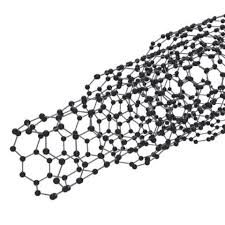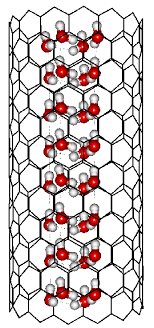Carbon Nano Tube can be raised above metals such as copper and aluminum by doping with iodine (PhD in Nano-Microelectronics)
Researcher and author: Dr. ( Afshin Rashid)
Note: The use of nanotechnologies in power transmission lines while increasing the reliability of the network significantly reduces energy losses and makes power transmission easier . One of the most widely used technologies in the electrical industry is CNTs , which are hollow cylinders made of carbon atom walls.
Carbon nanotube wires have an important effect on increasing electrical conductivity and mechanical strength. The conductivity of carbon nanotube cables can be increased by doping with iodine to metals such as copper and aluminum. And while they weigh much less and about one-sixth the metal wires. The tensile strength of the outermost wall of a CNTs (multi-walled) carbon nanotube is 100 times greater than that of aluminum. Carbon is one of the most amazing elements of nature that can be found in four forms in nature. All four shapes are solid and include nanotube and buckwheat diamond graphite. The size and physical shape of nanomaterials and how they bond atomically affect the properties of materials; The most important physical property of nanotubes is their "electrical conductivity". The electrical conductivity of nanotubes varies greatly from hand to hand, depending on the angle and type of joints; Each atom is vibrating in its place. When an electron (or electric charge) enters a set of atoms, the atoms vibrate more and transmit the applied electric charge when they collide with each other. The higher the order of the atoms, the greater the electrical conductivity of that set of nanotubes. The classification is based on the order of carbon atoms in the nanotubes and their conductivity; For example, the nanotube type is 1000 times more conductive than the copper type, while the zigzag type and the asymmetric type are semiconductor. The semiconductor properties of nanotubes vary depending on the type. Many applications of carbon nanotubes have so far focused on small-scale applications. The classification is based on the order of carbon atoms in the nanotubes and their conductivity; For example, the nanotube type is 1000 times more conductive than the copper type, while the zigzag type and the asymmetric type are semiconductor. The semiconductor properties of nanotubes vary depending on the type. Many applications of carbon nanotubes have so far focused on small-scale applications. The classification is based on the order of carbon atoms in the nanotubes and their conductivity; For example, the nanotube type is 1000 times more conductive than the copper type, while the zigzag type and the asymmetric type are semiconductor. The semiconductor properties of nanotubes vary depending on the type. Many applications of carbon nanotubes have so far focused on small-scale applications.
The property of CNTs nanotubes can be mentioned as power transmission lines and the basis for structural materials. Using supercid solution, carbon nanotube fibers with a length of several hundred meters can be produced.
Transmission and distribution of electrical energy by the structure of carbon nanotubes CNTs
The electrical conductivity of nanotube cables can be as high as that of metal wires, while their weight is much lower. With double-walled carbon nanotubes, he made a power transmission cable and performed the current transmission network at standard voltage. K Bell of highly conductive carbon nanotube based cable-like performance can be conventional metal, and at the same time is about one-sixth of their weight. These cables can be widely used in applications such as the aerospace and automotive industries where weight is an important factor.
Conclusion :
The cables are made of pure CNTs nanotubes and can be tied together without losing their conductivity. To increase the conductivity and stability of these cables, nanotubes can be doped with iodine. The ratio of conductivity to weight, called the specific conductivity , is higher for these nanotubes than for metals such as copper and silver . It makes the transmission of current in the network easier and the amount of current loss in transmission is less.
Researcher and author: Dr. ( Afshin Rashid)
PhD in Nano-Microelectronics




